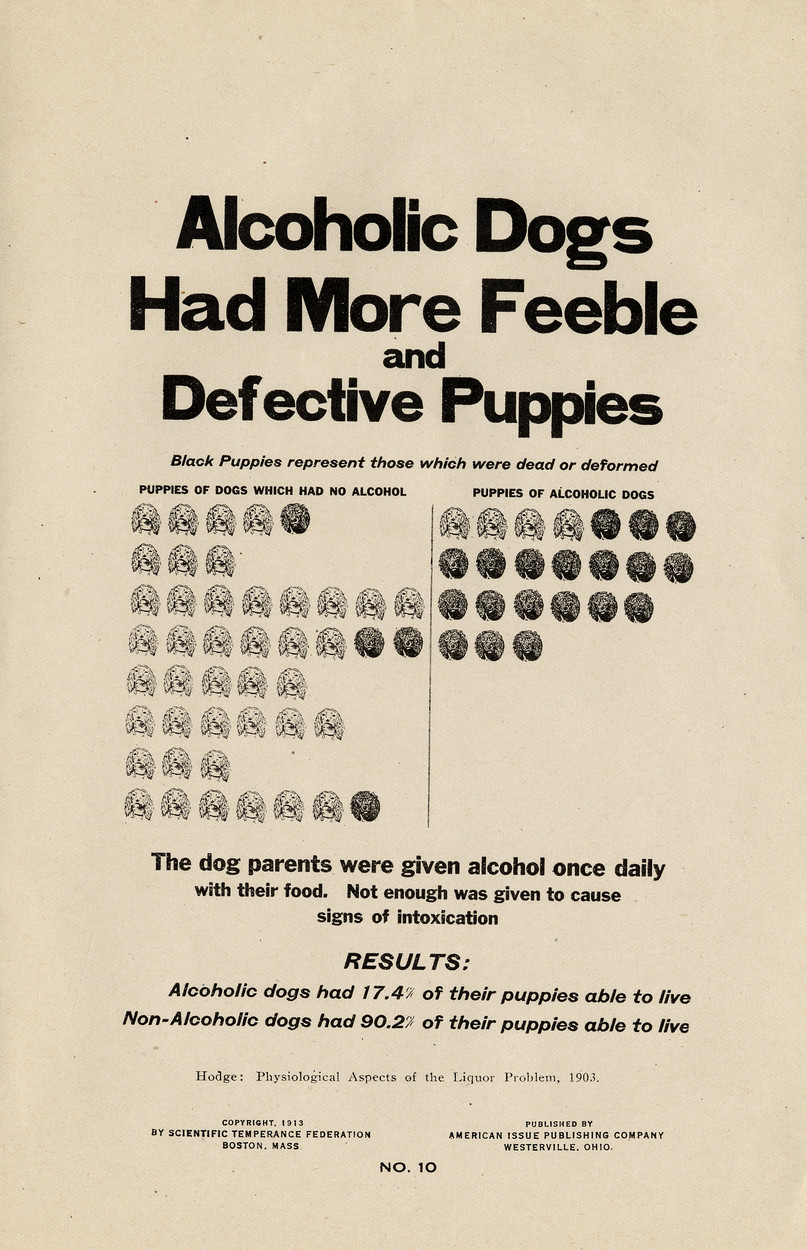In honor of the changing of the seasons, Curio is featuring two (quite odd) visual poems from 1950 by Daniel H. McCalib (author) and Dennis McCalib (author-illustrator): “Love and Fecundity” and “Octopus-Sky” (images below link to zoomable views of each work).

“Love and Fecundity” (1950)

“Octopus-Sky” (1950)

Ideally, data visualization techniques can facilitate discovery of trends within data sets, exposing previously unnoticed interconnections among and between data points, or otherwise confirm or dispute assumptions, which in turn can fuel further inquiry. But data visualization techniques, in the broadest sense, are also used for more message-driven or even outright propagandistic purposes. In many cases, the two modes of analysis — open-ended inquiry, on the one hand, and message-driven campaigns, on the other — quickly become intertwined in practice.
Below are some examples from the library’s “Alcohol, Temperance, and Prohibition” digital collection (a subset of the Chester H. Kirk Collection on Alcoholism and Alcoholics Anonymous). As noted in the digital collection’s accompanying online essay by Leah Rae Berk, the graphs, while visually convincing, are usually designed to suit exaggerated or predetermined causal claims, or else present only fragmented analyses, to stress the (no doubt oftentimes significant) influence of alcohol, above all else:
…A number of Temperance and Prohibition Era posters, like a number of the religious pamphlets, used a logos format to make a pathos appeal. These posters contained graphs and statistical information, presenting moral claims as factual information, such as “Alcoholism and Degeneracy,” “Intemperance as a Cause of Poverty Greatly Reduced Since Prohibition” and “Drink, A Great Cause of Immorality.” The poster “Drink, A Great Cause of Immorality” showed the results of a study of 865 Immoral Inebriate Women, claiming that 40% of their immorality was due solely to drink, including as evidence a statement by a medical expert: “There is no apparent reason why any of the persons…should have become immoral but for preceding alcoholism.” “Intemperance as a Cause of Poverty Greatly Reduced Since Prohibition” presented a graph that tracked the drop in poverty as a result of increased temperance, therefore conflating intemperance and immoral behavior with greater social ills like poverty….

“Drink Impaired Scholarship”
In addition to items from the Brown University Library’s Anne S. K. Brown Military Collection and items from RISD’s collections, “The Festive City” — currently on exhibit at the RISD Museum of Art through July 14, 2013 — features rare 18th-century prints on loan to the RISD Museum from private collector and Brown alumni Vincent J. Buonanno. Many of the prints loaned to the Museum (example), as well as those from Brown University Library collections (example), were recently digitized by Digital Production Services. The reproductions of Buonanno’s loaned prints benefitted from our most recent digital camera reprographic setup (which uses an Aptus-II 12 80-megapixel digital camera back).
Buonanno’s loaned collection of Chinea prints — prints commissioned to document sovereigns offering tributes to the Pope, as yearly Roman festivals — represents the annual festivals in an almost complete set, spanning the 1720s through 1780s. Reviews of the “Festive City” exhibit were recently featured in the Boston Globe and Providence Journal.
Students in Brown Professor Evelyn Lincoln’s Spring 2010 Graduate Practicum in the Department of the History of Art & Architecture curated and produced a collection of related essays, “Reading Ritual: Festival Books from the Anne S. K. Brown Military Collection.”
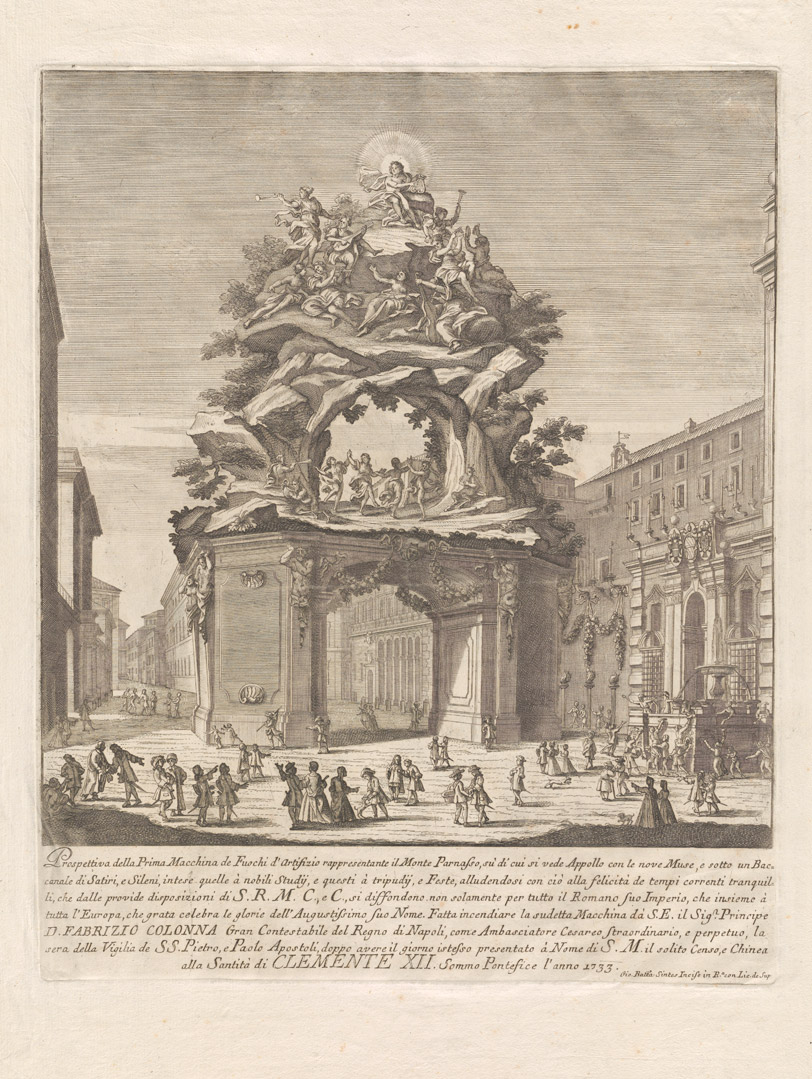
“Il Parnaso con Apollo e le Muse” (Gori Sassoli title); Giovanni Battista Sintes, 1680-1760 (etcher); Roma: 1733.
Already noted by Brown anthropology professor Stephen Houston last summer, the long-count Mayan calendar has now also been pragmatically confirmed to be of no grave cataclysmic import. Brown astronomy professor Charles H. Smiley (1903–1977) had contributed detailed work on the Mayan calendar system. He also happened to keep extensive travel scrapbooks throughout his career, several of which have been digitized by the library (as full volumes, per page, and also as individual objects within pages). His scrapbooks preserve miscellaneous travel ephemera — ticket stubs, restaurant menus — as well as personal photographs and letters. Shown below are some items from his winter 1959–1960 visit to Mayan ruins relating to the resulting publication of his cross-calendar correlation research.
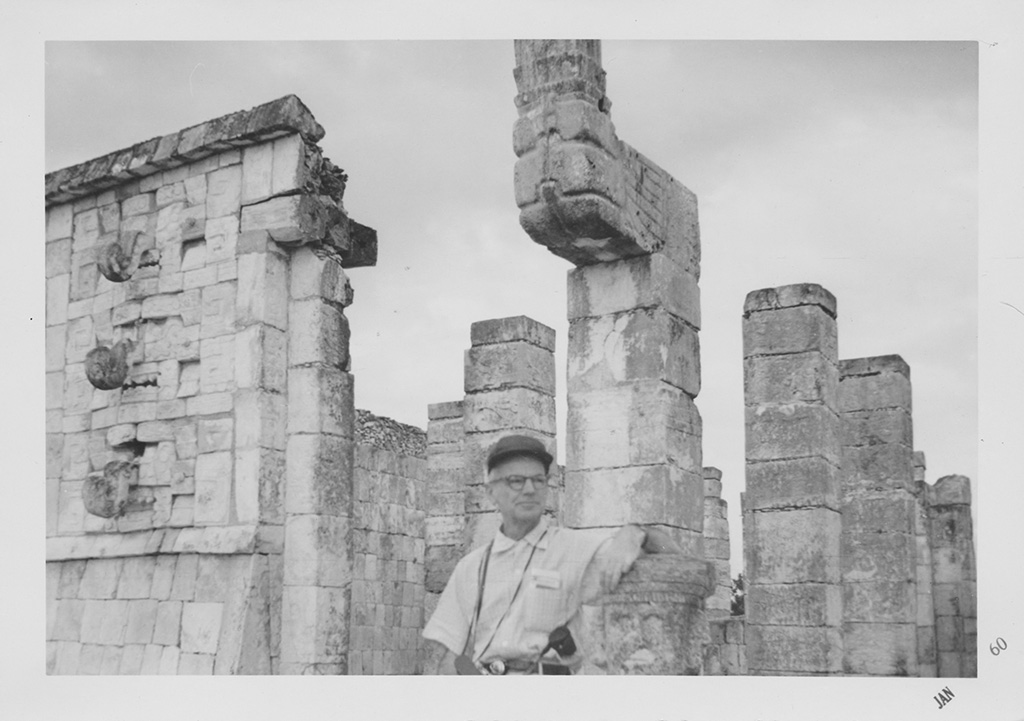
Professor Smiley at Mayan site

Mayan hieroglyphs as drawn by Professor Smiley (detail)
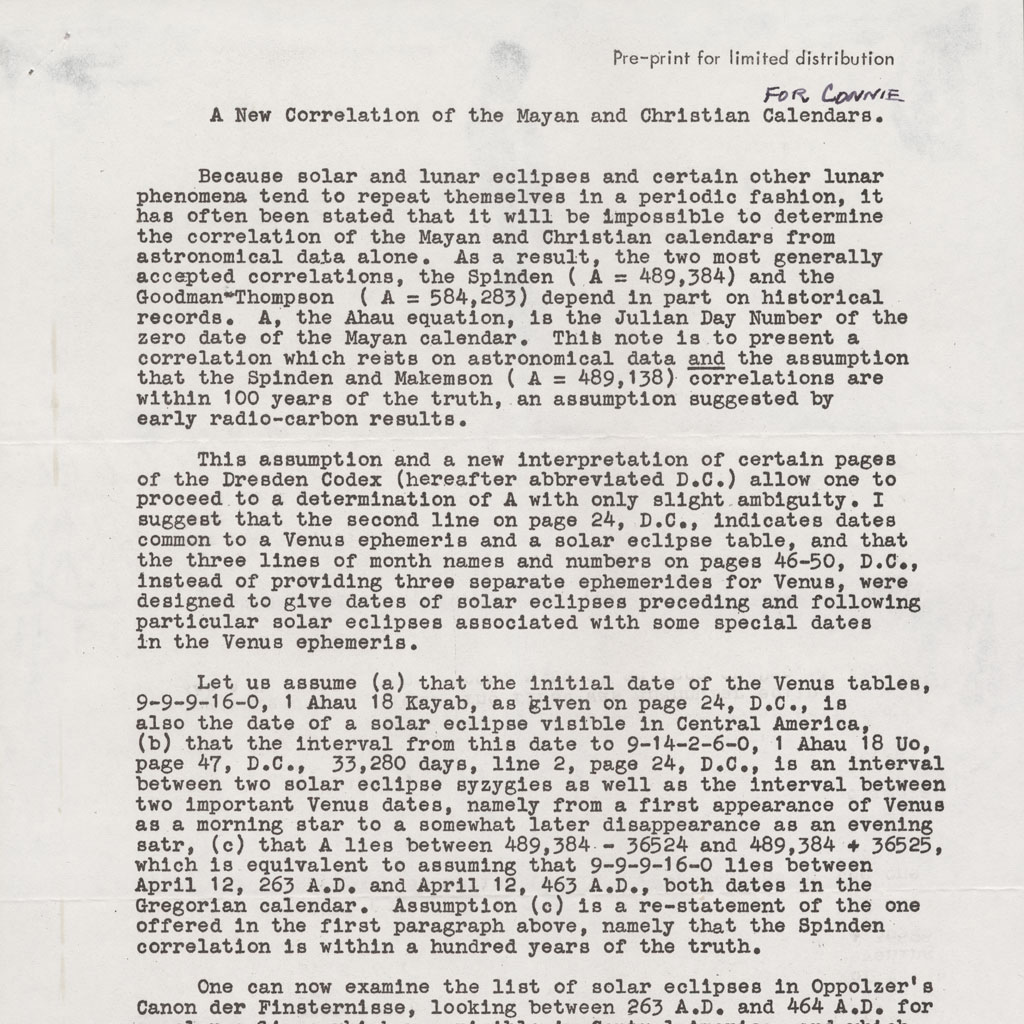
Pre-print of Professor Smiley’s calendar research (detail)
Below is “Walt Whitman,” a 1965 concrete poem in the shape of a pine tree by Edwin Honig (1919 – 2011, founder of Brown’s graduate writing program), personally inscribed to Roger E. Stoddard (Brown class of 1957, and former curator of the Harris Collection of American Poetry and Plays at Brown University Library). Books relating to Stoddard’s bibliographic work are currently on exhibit at the John Hay Library through December 14, 2012.

In 2007, the Library digitized two original, loaned rubbings of the inscription from Trajan’s Column (c. AD 113), to facilitate a reproduction request of the Rare Book School’s then Program Director Ryan L. Roth. The rubbings had been made by Edward Catich in 1970, and are now owned by Sheila Waters. Because of their size (two ~9-foot-wide thin-paper sheets), these were digitized in three overlapping shots per sheet, atop a white background, and then digitally merged together to create the final images.
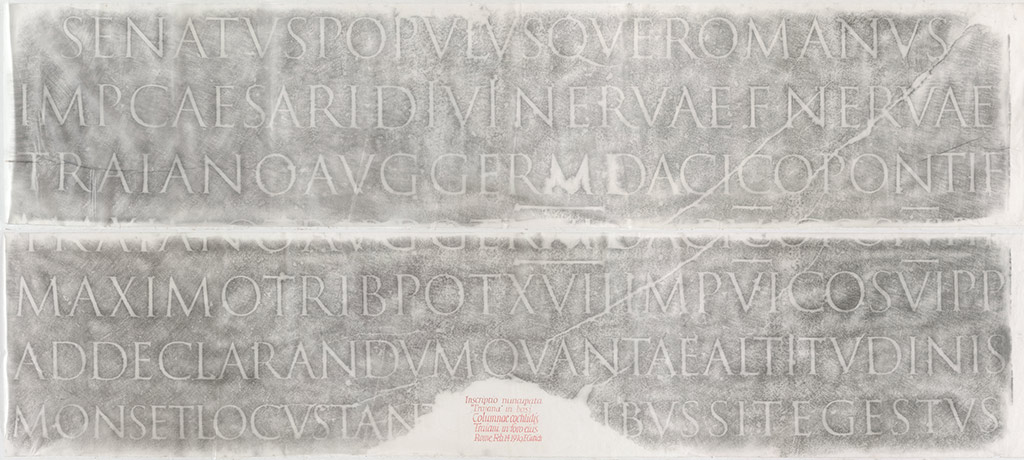
Catich’s rubbing of Trajan’s Column’s inscription.
Catich’s research and speculation on Trajan’s Column’s lettering in turn influenced the creation of the now-popular digital font Trajan, first released as a PostScript font in 1989 (designed by Carol Twombly for Adobe Systems).
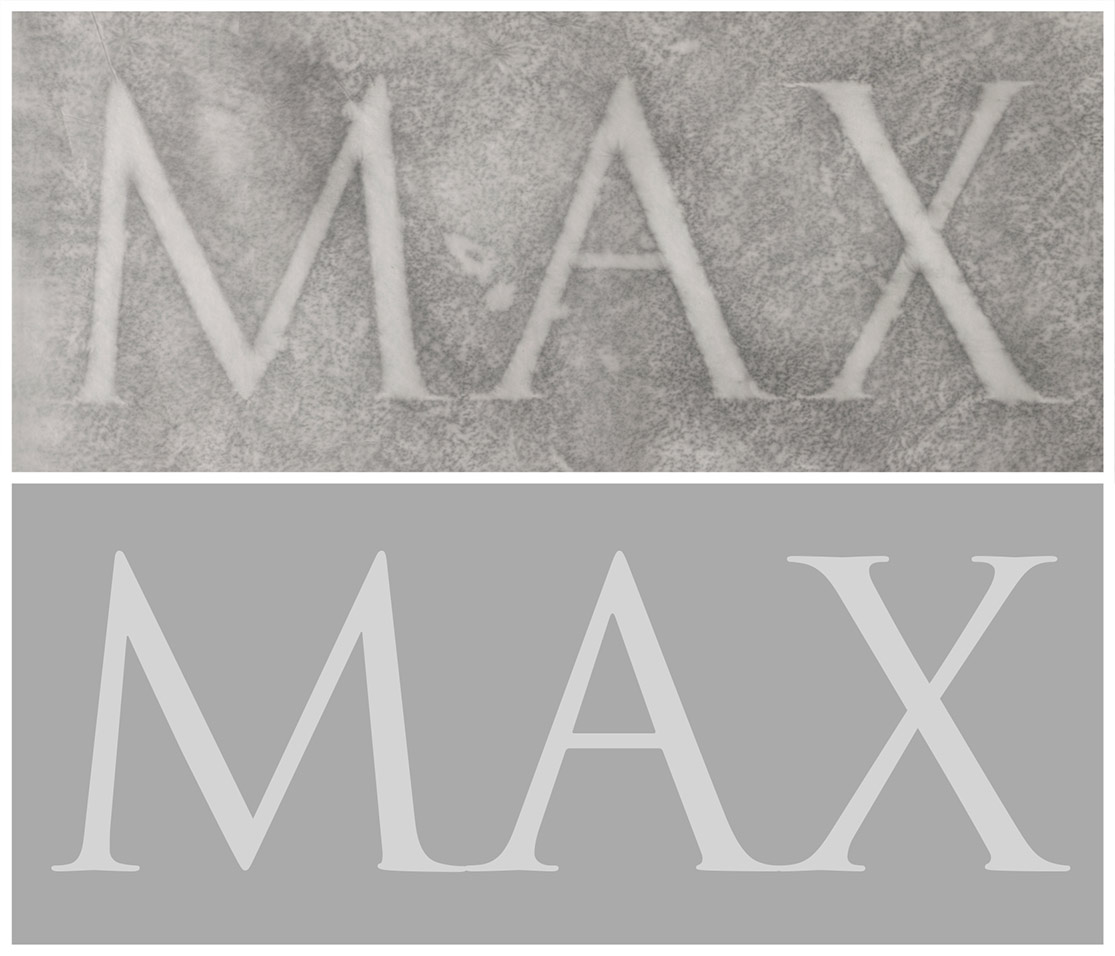
Top row: detail from Catich’s rubbing; bottom row: matching letters from the digital typeface.
Ever since, starting in the early 1990s, and often as an affront to many graphic designers’ sensibilities, the Trajan font has been featured on an inordinately high percentage of American movie posters — even to the extent that the Roman lettering style is now associated with both Japanese Samurais and Egyptian mummies.

Trajan in The Last Samurai
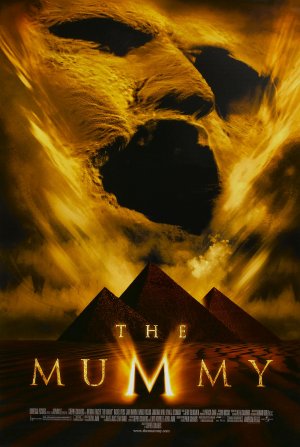
Trajan in The Mummy
In addition to photographing Special Collections materials for ongoing digital projects, or for patron requests for publication, Digital Production Services also digitizes items to be featured in library-produced promotional publications. In 2008, a coffee pot once owned by “Dr. Bob” (Rober Holbrook Smith), a founder of Alcoholics Anonymous, was taken off the shelf and set against a simple white background to be photographed.
The photograph itself is a straightforward shot — at the time, captured using the John Hay Library’s Nikon Digital SLR camera. However, to remove the background for a publication layout, “clipping paths” were created in Adobe Photoshop. Clipping paths are a useful way to mask-out the background within a scene — in other words, clipping paths can be used to visually define the edge of an irregularly-shaped object which does not conform to a standard rectangle-based crop.

Above, L–R: detail of coffee pot digital image; detail of image with background removed via pixel-based selection; detail of image showing vector-based clipping path overlaying pixel grid; clipping-path-masked image as placed in final layout.
There are pixel-based methods of creating masks in Photoshop, although clipping paths offer a unique solution, storing resolution-independent Bézier-curved (vector-based) edges alongside the pixel-based image grid, particularly useful for layered layout designs. Curves used for clipping paths are the same vector-based curves now becoming more widely supported by web browsers, as part of the Scalable Vector Graphics (SVG) specification and HTML5’s <canvas> tag scripting. (For an example of resolution-independent, vector-based curves implemented solely via web-based technologies, see this proof-of-concept site by a Google employee.)





